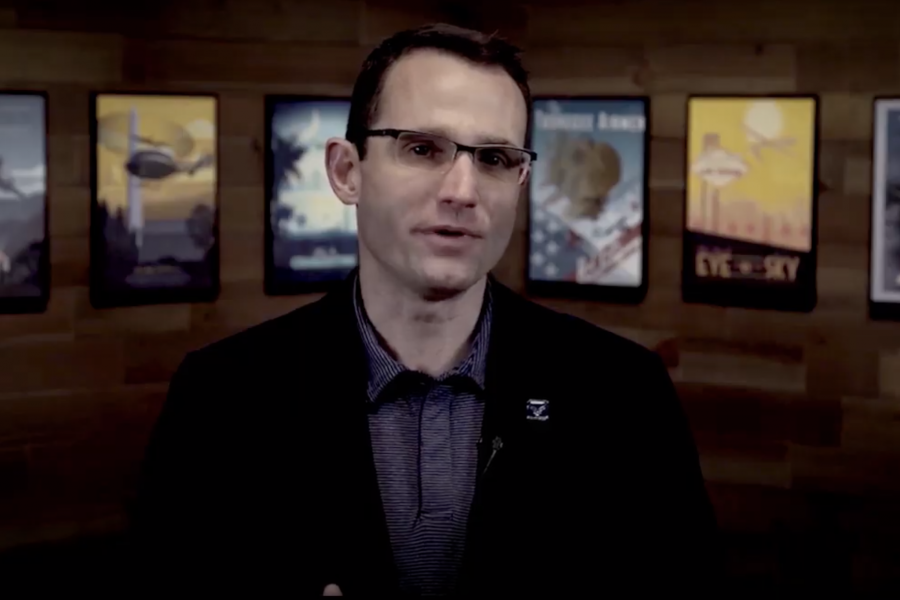The transformational acquisition ideas championed by former Air Force acquisition chief Will Roper will survive his departure from the service, but it will take “courage” to implement them, USAF acquisition leaders said at AFA’s virtual Aerospace Warfare Symposium. They also said the Air Force’s new tactical aircraft study—in parallel with a Joint Staff study—will take a decades-long look at aviation requirements.
“We all believe strongly in digital acquisition,” acting Air Force acquisition executive Darlene Costello said in a Feb. 24 press conference at vAWS. The strategy “fits nicely” with the advanced capabilities the Air Force needs to pursue, and digital engineering, agile software development, and open architectures will be the hallmarks of all new programs, she said, so Roper’s initiatives will continue.
With regard to digital, “e-systems,” such as the Next-Generation Air Dominance fighter or the Low-Cost Attritable Aircraft, top uniformed acquisition official Lt. Gen. Duke Z. Richardson said it will take courage to get full potential from them. Such programs would design and field a limited number of systems—with an abbreviated service life—and be rapidly replaced with the next in the series, under the concept Roper put forward.
“Because we don’t want to engineer a lot more structure into something” to make it last a long time, “It’s going to require courage on our part. As a nation, we’re really going to have to commit to doing this, because when it … times out, it will have to have another one right behind it. And if we’re not willing to have that courage, then we shouldn’t start it,” Richardson said.
The follow-on series “might be a variation of the series we just bought,” Richardson noted. “And really, the only way you can do that with speed is with these digital tools.” The digital models can be quickly altered to “pursue some new part of the threat that we weren’t seeing” and add a new feature to the design.
The tactical aviation study Chief of Staff Gen. Charles Q. Brown Jr. announced last week will be a view of USAF’s combat aircraft requirements over several decades, Richardson explained.
In his remarks to defense writers Feb 17, Brown was “talking about the age of the fighter fleet,” which averages 29 years now, Richardson said. “We’ve got a Chief here who is fully embracing … digital acquisitions … He’s thinking, ‘is there a way to refresh my fighter fleet quicker?’”
The TacAir study will be about establishing “what the fighter fleet will look like, and making sure he has the right tool for the right job. He would not want to apply one tool to every job, especially if it’s an expensive tool.”
Brown said he would conduct the study in cooperation with the Office of the Secretary of Defense’s Cost Assessment and Program Evaluation shop to get an independent view of costs, so the Air Force’s plans will have validity when measured against those of the other services in an ongoing Joint Staff review of tacair. He also said he would consider a clean-sheet “generation five-minus” aircraft for some less-demanding missions, to free the F-35 for the most highly-contested missions requiring peak capability. He specifically ruled out buying new F-16s for less-demanding missions, preferring digital, clean-sheet approaches.
While some interpreted Brown as suggesting the Air Force may back away from the F-35 program, Costello said there has been no deviation from the planned acquisition of 1,763 of the fighters for the Air Force.
While Brown said the tacair study should be concluded in time for the fiscal 2023 budget deliberations, Richardson said the TacAir timeline will look ahead 30 years, and isn’t focused on the short term.
“We’ve got a lot of programs we’re trying to move forward,” Richardson said. Brown’s timeline is “not within the FYDP,” or future years defense plan. “His time horizon is out to 2030 and beyond, even 2040. He’s thinking, ‘what will my force mix look like [then]” so, think about it from that perspective … way out there.”
Richardson’s hoping the study will identify “a whole list of programs that we should go after. I’m also hoping … it will also show us the phasing of it, so if we do something for a lesser threat, it will also inform us … when we might even want to start that.”
Work is being done now to find the knee in the curve that will distinguish between “expendable” and “attritable” unmanned systems, to develop affordability plans, he said.
Asked about a “major redesign” of the B-21 bomber referenced in Air Force Magazine’s current issue, Costello said that while the bomber did indeed require a redesign—the article describes changes to the aircraft’s inlets—the program is proceeding on cost and schedule. Richardson said such issues are “part of the development process” and there’s no reason to suspect a “schedule break” on the B-21 because of it.
